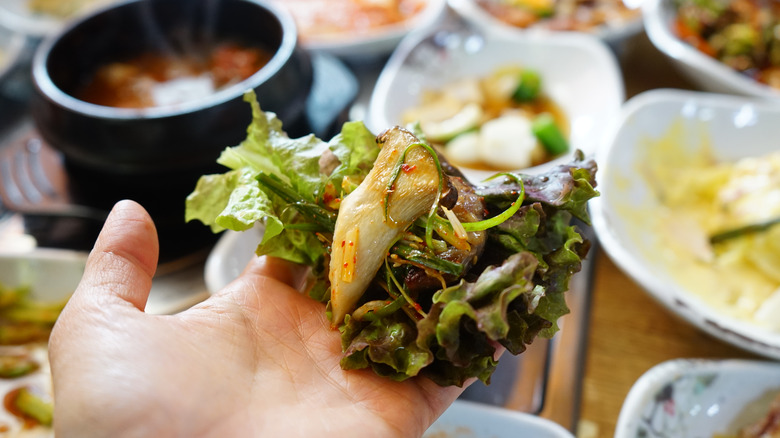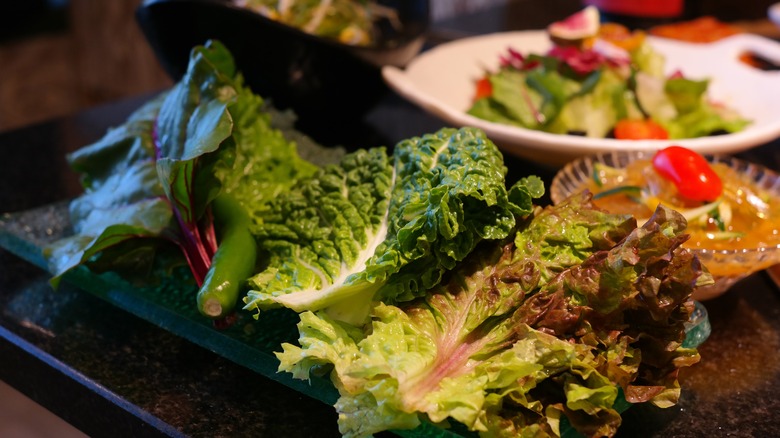The Proper Etiquette For Eating Ssam At Korean Barbecue Restaurants
At a bustling Korean barbecue restaurant, you feel all your senses buzzing. The scent of sizzling meats wafts through the air; a beautiful array of colorful side dishes — or banchan (반찬) — like sesame-oiled beanprouts, creamy Korean potato salad, and kimchi radishes and cucumbers decorate the table. From fresh leafy greens to marinated vegetables and grilled meats, it's a feast for the senses. Understandably, all this can feel a bit overwhelming for the uninitiated. As you're wondering where to begin, your Korean BBQ aficionado friend beside you notices your hesitation.
They lean over and share a secret about the art of ssam, demonstrating how to select a crisp lettuce leaf and place a juicy piece of barbecued meat dipped in sauce atop it — next, a touch of kimchi and a choice of another banchan. "Let's go with the spicy fish cake, or oden," they say. The trick to assembling this morsel? Less is more — because more like sushi, and unlike tacos, ssam is meant to be eaten in one big bite.
Ssam (쌈), meaning "wrapped" in Korean, is an integral part of the Korean barbecue experience. It embodies the culinary art of wrapping barbecued protein in fresh leaves or veggies (such as aromatic perilla, crispy lettuce, or tangy slices of pickled daikon), infusing every bite with a harmonious and delicious blend of textures and tastes.
Savoring ssam, a dance of flavors at Korean BBQ restaurants
As you take that first big bite of ssam, an explosion of flavors dances on your palate, one that doesn't overwhelm but feels mindfully balanced. The Korean BBQ experience, you realize, is not just a meal but a dance of flavors and traditions that have been perfected over centuries. From the art of grilling meats to the science of assembling the perfect ssam, every element comes together to offer an immersive culinary experience. It's no wonder Korean barbecue is so popular and has become so mainstream, even in the U.S.
And what's a fun culinary journey without the perfect drink to complement it? Ideally, you should pair delicious ssam with Korean beverages. Sip on a chilled glass of soju — a spirit made from distilled rice — or delight in the milky richness of makgeolli, a cloudy Korean rice wine (or rice beer). Enjoy them responsibly as they help cleanse your palate and enhance the flavors of all the meat, banchan, and of course, the perfectly assembled ssam before you.
So the next time the scent of grilling meat beckons and you find yourself surrounded by an array of banchan, remember the lessons from this first experience. Approach the grilling table confidently, don't stuff your ssam wrapping with more than you can eat in one bite, and dive deep into the richness of the overall experience. After all, it's not just about eating; it's about understanding and appreciating a culture through all its flavors and traditions.

